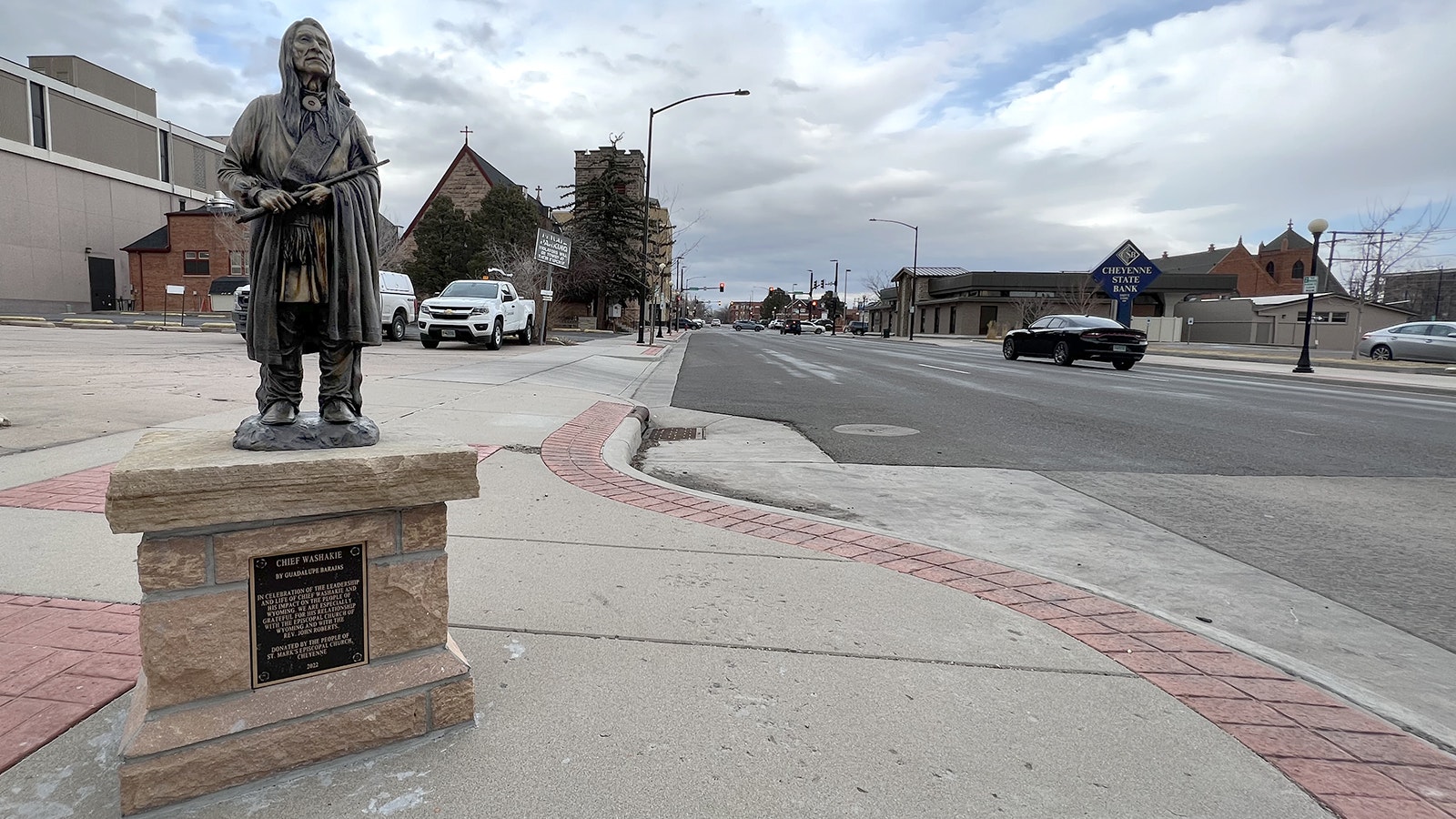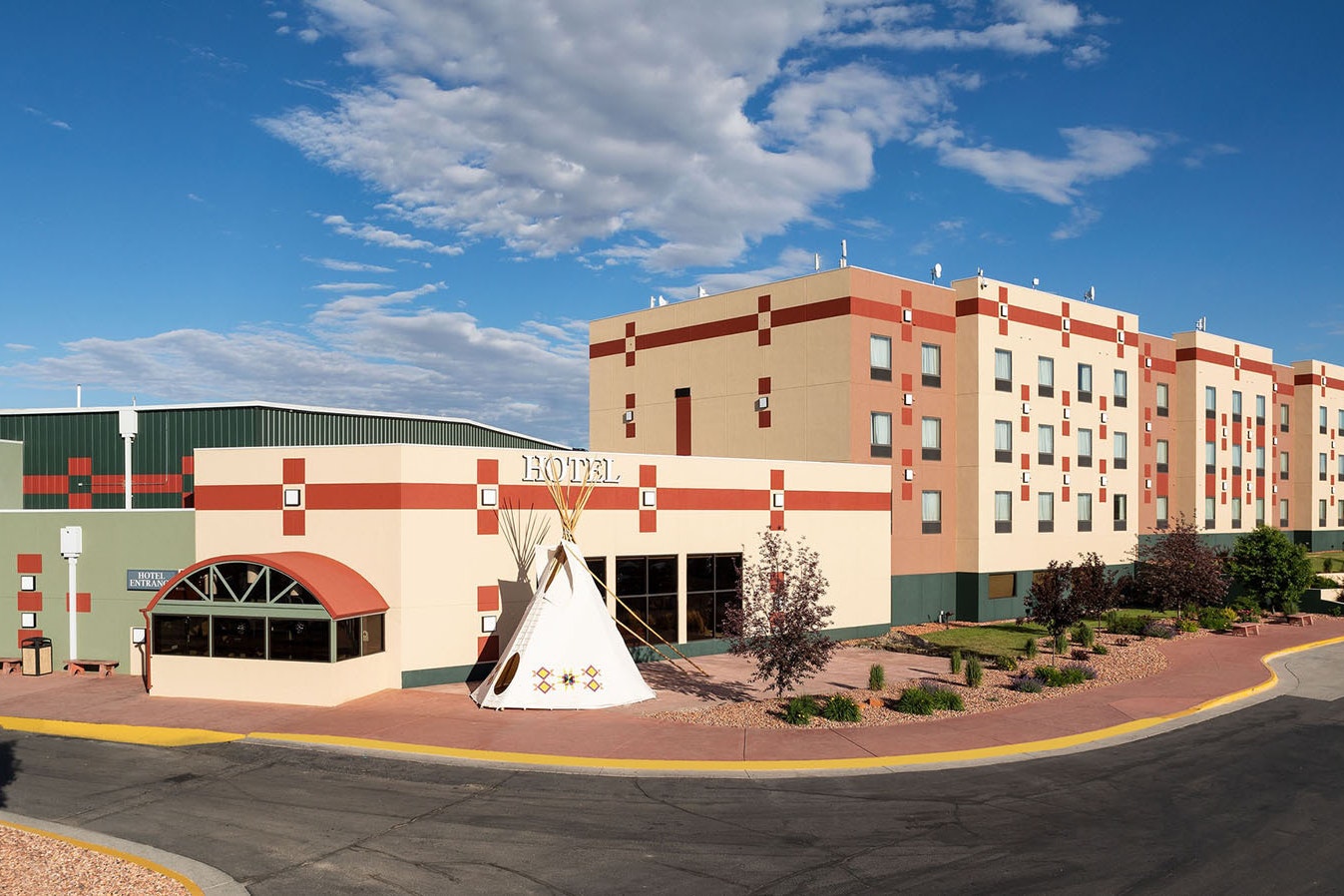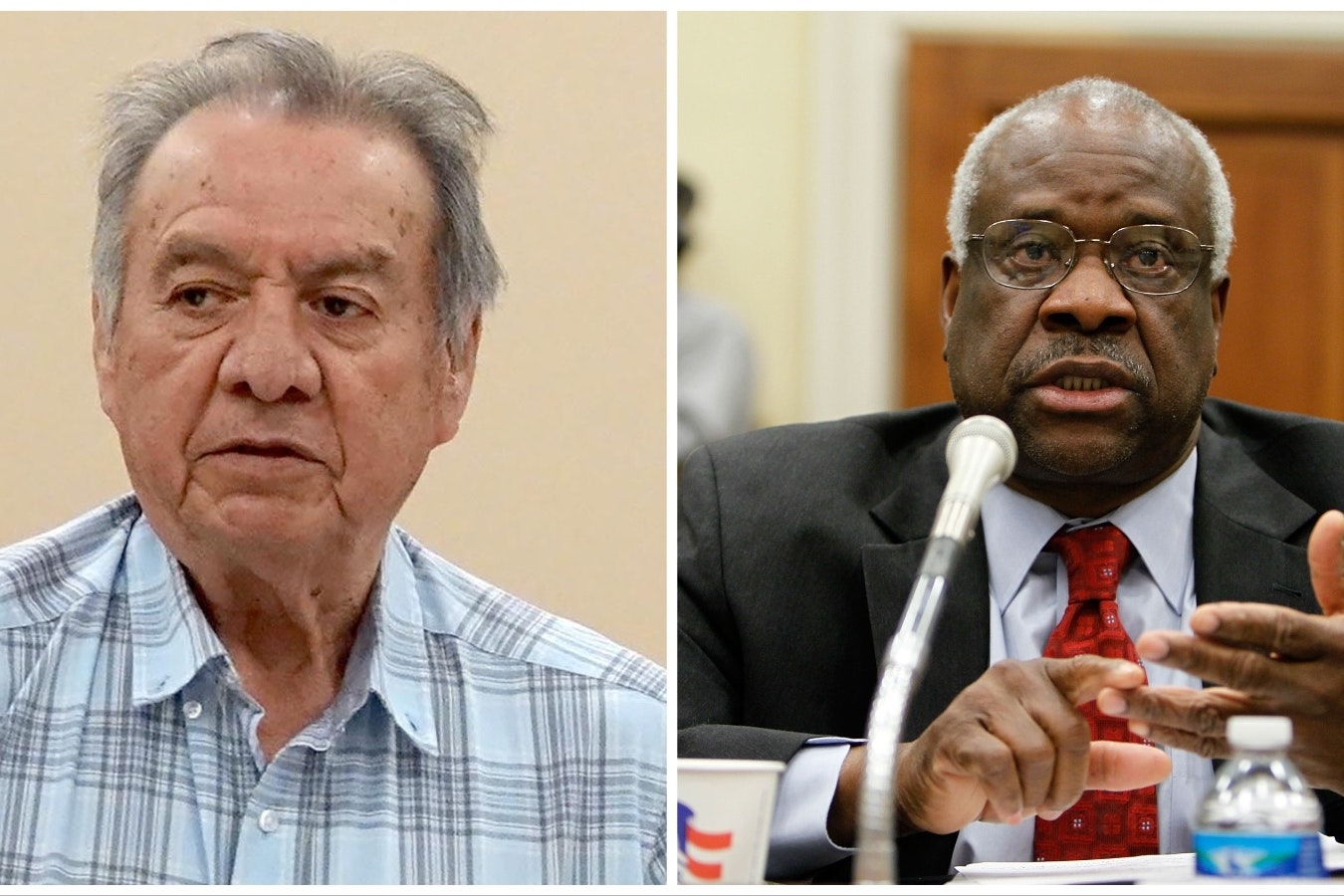Chief Washakie was a proponent of peace among his people and white settlers who moved into American Indian territory in the 1800s in whats now Wyoming.
A new statue memorializing the great Eastern Shochone tribal elder was dedicated Friday at the corner of 19th and Capitol streets in Cheyenne on the southwest corner outside St. Marks Episcopal Church.
Although put up late last year, the ceremony to commemorate the 2-foot-tall bronze statue on a pedestal with a plaque was delayed until this past weekend to coincide with the opening of an exhibit celebrating indigenous artists.
"We had planned to do a big celebration, but it made sense to do it back to back with GROUNDED, with all the people in town, the Native Americans and the indigenous folks," said Rev. Rick Veit, rector at St. Marks, referring to the exhibit that opened at the Wyoming State Museum on Thursday.

GROUNDED Exhibit
The exhibit, which runs through May 20, features works by indigenous artists from around the Great Plains.
Veit said the timing of the exhibits opening worked out well with their plan to officially dedicate the bronze of Chief Washakie, which portrays the Shoshone leader holding a peace pipe.
"We were working with our bishop (Right Rev. Paul-Gordon Chandler) on this art project to bring it to Cheyenne," said Veit. "So when we figured out a date, and when he figured out a date to bring GROUNDED to Cheyenne, it was a perfect fit."
"The merging of the indigenous celebrations allowed both events to grow in meaning and scope," said Veit.
"You'd have drummers down here, and then of course we brought the descendants specifically for Chief Washakie," said Veit, speaking of the Rev. Roxanne Jimerson-Friday, an Episcopal priest for the Wind River Indian Reservation who also is the great-great-granddaughter of Washakie's sister, Mary.
She and Washakie's great-great-granddaughter, Zedora Enos, were at the dedication.
Veit added that a cedaring ceremony by a Native American elder added to the spiritual nature of the event.
"He wasn't just cedaring the statue, he was cedaring all of us, but the special one was Zedora, sitting in her chair," said Veit. "Welcoming the Spirit in our midst and touching those eagle feathers to Zedora was so powerful."
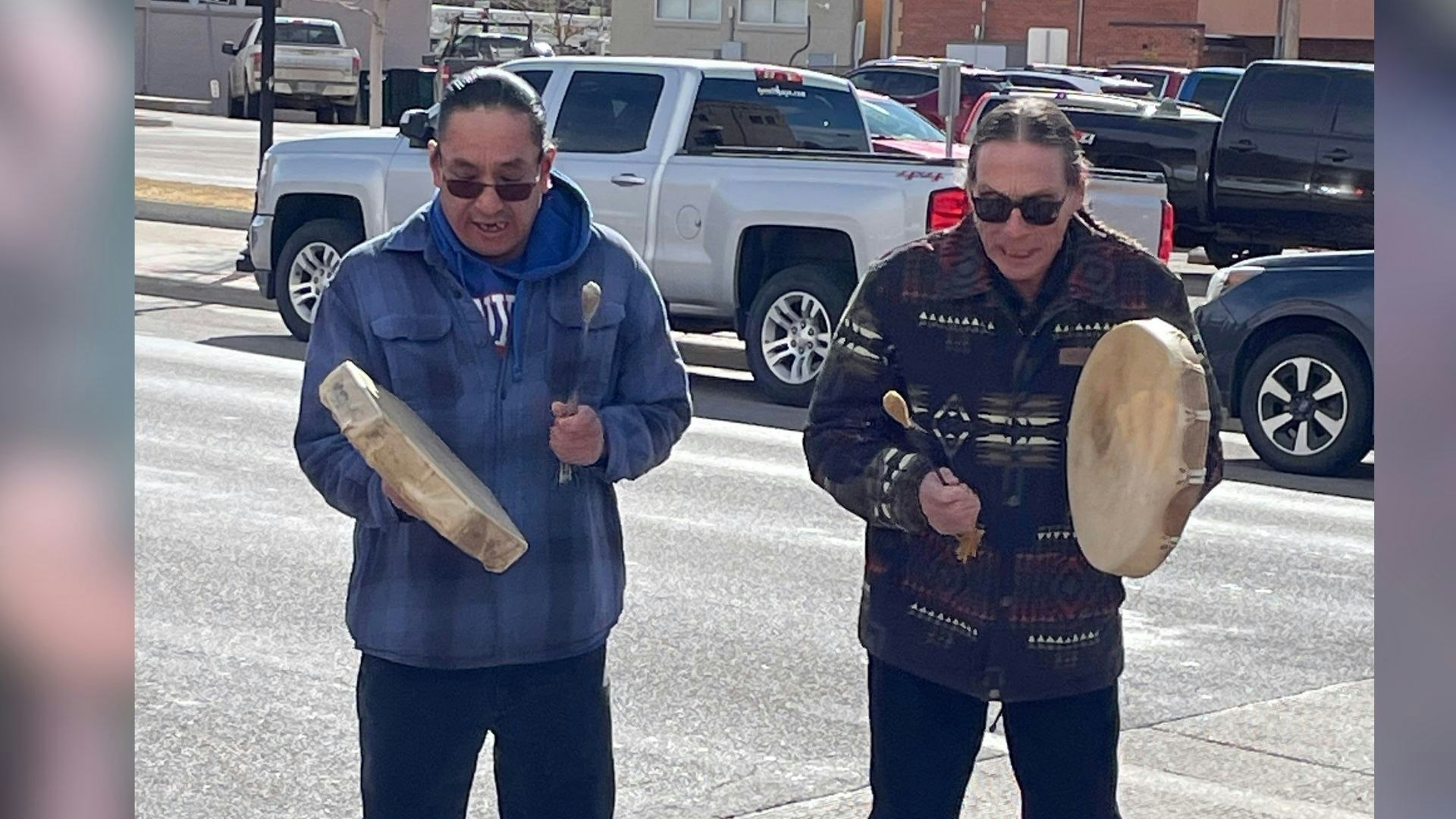
Capitol Avenue Bronze Project
The bronze statue of the famous chief was created by Cheyenne-based artist Guadalupe Barajas and installed last year as part of Cheyennes Capitol Avenue Bronze Project.
Its overall goal is to place bronze statues honoring the heritage of the city and state along Capitol Avenue from the historic train depot to the steps of the Capitol.
"As soon as I heard about the Capitol Avenue Bronze Project, I immediately thought, 'Oh my gosh, (St. Marks is) a half a block away, we've got to become part of this,'" said Veit.
The project was first suggested by Harvey Deselms, owner of a Cheyenne art gallery.
When complete, there will be 28 bronze statues in total, one on every corner of Capitol Avenue from the remodeled Union Pacific Train Depot on Lincolnway up to the Capitol building. The statues will feature scenes from Western life, including people and wildlife.
"They had already chosen a whole group of statues that they really wanted up on Capitol, and one of them was Chief Washakie," said Veit. "And I immediately just thought, 'well, that's the one for us.'"
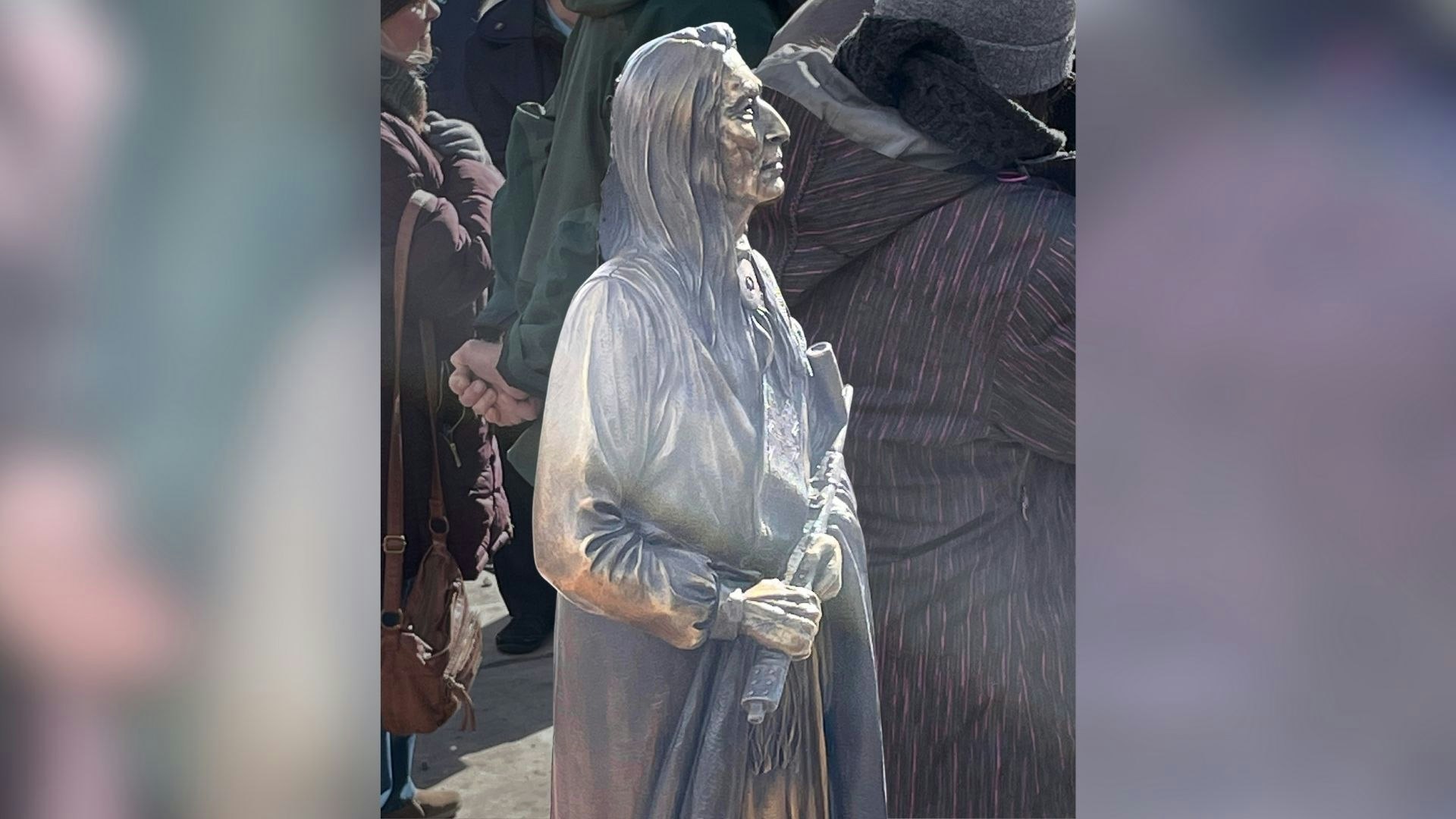
Washakie And The Episcopal Church
"The placement of the 2-foot-tall statue on the same block as St. Marks Episcopal Church was deliberate," said Veit.
"In doing some research, I learned that John Roberts, who was an Episcopal priest, worked closely with the chief up in Lander and in the reservation area," said Veit. They were good friends. It's kind of the opposite story of what we normally hear with what happened to the indigenous people.
Veit said that about three years before Washakie died, he was baptized as an Episcopalian, of his own volition and not under coercion from white society.
"I thought, 'Oh my gosh, this is the perfect statue to connect with St. Marks,'" he said. "Washakie and Roberts were such good friends, and I think they really shared the spirituality, and what we see as a church, the commonality of it all."
"We talk about the Holy Spirit, and the indigenous people talk about the Great Spirit. I just think they're very similar."

